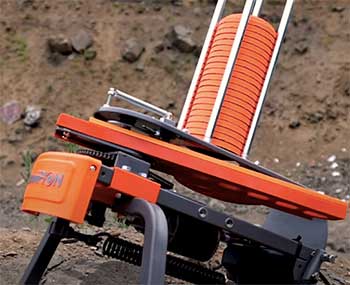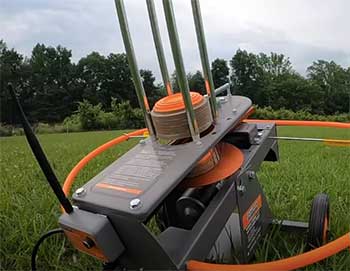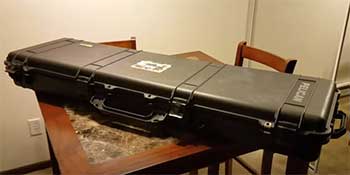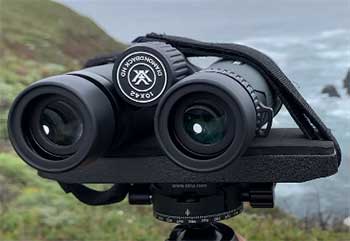If you’re a clay target shooter looking to take your training to the next level, an electronic clay pigeon thrower is a must-have piece of equipment. These machines allow you to practice shooting alone and simulate the unpredictable flight paths of real clay targets.
Two of the most popular electronic throwers on the market are the Champion Workhorse and WheelyBird models. But which one is right for you?
In this detailed comparison, we’ll examine the key features and performance of the Champion Workhorse and WheelyBird throwers. We’ll break down their construction, ease of setup and use, throwing power, versatility, and price to help you decide which electronic thrower best fits your needs and budget.
Whether you’re a casual shooter or avid competitor, read on to discover how these throwers stack up!
A Brief Comparison Table
| Feature | Champion Workhorse | WheelyBird |
| Frame Construction | Heavy-duty steel | Lightweight aluminum folding |
| Weight | 104 lbs | 48 lbs |
| Power Source | 12V sealed lead acid battery | Internal rechargeable battery |
| Throw Distance | 10-50 yards | 10-60 yards |
| Oscillation | Up to 45 degrees | Up to 45 degrees |
| Target Versatility | Clays, midis, game birds | Clays, occasional midis |
| Price | $2100 | $650 |
| Best Suited For | Competitive & commercial use | Recreational & casual use |
Overview of the Champion Workhorse and WheelyBird Clay Throwers
The Champion Workhorse and WheelyBird clay throwers have some similarities, but also key differences that impact their performance and usability.

The Workhorse is Champion’s flagship model and is built with a heavy-duty steel frame and aluminum throwing arm.
It can throw standard clay pigeons, midi targets, and even lightweight game birds.
The Workhorse is powered by a 12V battery and uses a high torque motor to launch clays at adjustable distances up to 50 yards.
The WheelyBird has a lightweight yet durable folding aluminum frame.
It runs on an internal rechargeable battery and also utilizes a high torque throwing arm to launch standard clays.
The WheelyBird advertise throws of up to 60 yards. Both machines feature wireless remotes and oscillation to randomly vary the clay’s flight path.
So in broad strokes, the Champion and WheelyBird both represent commercial-grade electronic throwers suitable for solo practice and training. But let’s dive into the details…
Key Differences Between Champion Workhorse Vs. WheelyBird Clay Pigeon Throwers
- Construction and Design
The construction quality and design of an electronic thrower impacts its durability and functionality.
The Workhorse features a heavy-duty steel frame with aluminum throwing parts that gives it an extremely sturdy base. At a weight of 104 lbs, this machine isn’t going anywhere during use. The tradeoff is that it is one of the heaviest throwers on the market and difficult to transport.
The WheelyBird utilizes lightweight aircraft-grade aluminum for its folding frame and throwing arm. The entire machine weighs just 48 lbs, making it much easier to transport and set up.
The folding design also makes storage more convenient. However, the lightweight materials aren’t quite as durable for the rigors of daily high-volume use.
For control, both models use a 25-foot wireless remote with simple controls to turn the machine on/off, select throwing distance, and launch targets. The Workhorse remote is built for durability, while the WheelyBird uses a simpler plastic remote to cut costs.
Winner: Tie – The Workhorse offers greater durability with its steel frame, while the WheelyBird is markedly more portable and easier to set up. For casual use, the WheelyBird frame is sufficient, while high-volume shooters may appreciate the Workhorse’s resilience.
- Ease of Setup and Use

Beyond construction, we also need to consider how easy these machines are for one person to set up and operate.
Setting up the 104-lb Workhorse thrower is definitely a two-person job. Once in position, it provides solid stability during use.
Adjusting the throwing elevation and angle is simple with hand cranks. The wired remote plugs directly into the control panel for reliable operation.
The WheelyBird is light enough to carry out to the range solo. Its folding frame then allows you to pivot and lock the throwing arm into place.
Like the Workhorse, adjusting the throwing direction and power is straightforward with integrated cranks. The wireless remote allows flexible placement anywhere around the thrower.
When it’s time to wind a round of clays, both machines feature a carousel design that makes loading easy and quick. Simply set clays into slots around the carousel and you’re good to go.
For solo shooters, the WheelyBird’s lighter frame and wireless remote make it much simpler to set up, use, and tear down again. The Workhorse may require an extra set of hands to position on the range.
Winner: WheelyBird – With its folding design and wireless remote, the WheelyBird has an edge in usability for individual shooters.
- Throwing Power and Adjustability
A key performance metric for any clay thrower is how far and fast it can launch targets. Power and adjustability are important to mimic the unpredictable paths of real clays.
The Workhorse motor generates 1200rpm to throw standard clays between 10 and 50 yards at variable speeds. With the high torque and sturdy base, it can deliver consistent, long throws over extended periods. Adjusting the power and direction is simple with the hand cranks.
WheelyBird advertises throws of up to 60 yards thanks to its high torque motor. The settings allow you to adjust elevation from 0-50 degrees and the throwing distance in 10-yard increments. While throwing up to 60 yards is possible in ideal conditions, more consistently realistic distances with the WheelyBird are 40-45 yards.
Both machines include oscillation settings to randomly vary the flight path left or right up to 45 degrees. This helps keep you on your toes!
The Workhorse’s heavier frame gives it an advantage in consistent power, even when running all day. The WheelyBird does fine for casual shooting, but can’t quite match the strength and durability of the Workhorse drive system when used extensively.
Winner: Workhorse – With its robust motor and sturdy base, the Workhorse claims the edge for consistent throwing power at long distances over prolonged use.
- Versatility
To maximize their versatility, both the Workhorse and WheelyBird are designed to throw a variety of clay target types.
The Workhorse can launch standard 108mm clays, midi targets, and even lightweight batch fed game birds like quail, pigeons, and chukars using an available add-on kit. The versatility makes it great for practicing shooting skills for everything from skeet and trap to sporting clays and hunting scenarios.
The WheelyBird is optimized for wheel-thrown 108mm clays. You can occasionally shoot midi targets or rabbit targets, but the lightweight design isn’t really suited for heavy batch feeding of pigeons and the like over time.
For clay target leagues and tournaments, the Workhorse definitely provides an edge in supporting a wider variety of target types. Both machines do fine for recreational shooting of standard clays.
Winner: Workhorse – With the ability to readily launch mini, midi, and batch fed targets, the Workhorse provides more versatility for skills training. See how it works in this video.
Also Read: Comparison of Delta Waterfowl And Ducks Unlimited.
- Cost Considerations
With more power and versatility comes a higher price tag. Let’s break down the cost considerations between these electronic throwers.
The Workhorse has a retail price of $2,100. For that premium price, you’re paying for its commercial-grade durability and performance. This machine is built to last through years of heavy use. The tradeoff is higher weight and transport challenges.
With its lightweight folding design, the WheelyBird offers a more budget-friendly price of $650 – less than 1/3 the cost of a Workhorse! For casual shooters not looking to invest heavily up front, the WheelyBird delivers very solid performance for recreational use for a fraction of the price.
There are higher maintenance costs associated with the Workhorse as well given its sealed lead acid battery and higher wear on consumable parts like the throwing arm. The WheelyBird uses an internal rechargeable battery and cheaper parts that – while needing replacement more often – cost notably less.
Winner: WheelyBird – At 1/3 the upfront cost of the Workhorse and cheaper ongoing maintenance, the WheelyBird delivers excellent value for casual clay shooters.
Final Recommendation
To wrap up this head-to-head comparison, here is my recommendation based on your needs:
- For avid competitive shooters or commercial range use, the Champion Workhorse is worth the significant investment. It provides the power, versatility, and durability to handle high clay volumes day-in, day-out.
- For recreational and solo shooters on a budget, the WheelyBird delivers all the key features you need at a fraction of the cost. As long as you don’t overload it, this lightweight thrower holds its own for casual training and fun.
The Champion Workhorse is “the standard” for premium electronic clay target throwers with commercial-grade longevity. But newer budget models like the WheelyBird provide a capable experience for the average shooter at an attractive price point.
Think hard about your needs and budget to determine if those extra features are worth 2-3x the investment. For many casual shooters, the WheelyBird hits the sweet spot of price and performance. But competitive shooters who run thousands of clays weekly will appreciate the Workhorse’s resilience over the long haul.
Hopefully this detailed comparison provides clarity on which electronic clay thrower best suits your shooting needs and training goals! Let me know if you have any other questions.


